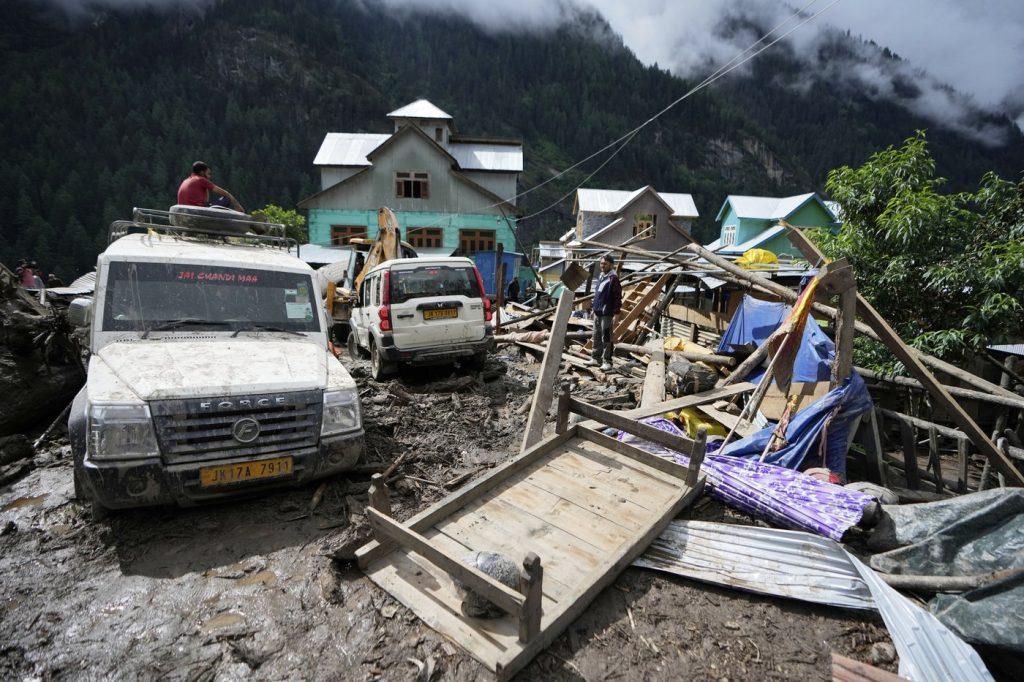Relentless monsoon rains have caused devastating flooding and landslides across northern India, claiming the lives of at least 90 people and displacing hundreds of thousands. The affected areas include India's Himalayan states such as Uttarakhand, Himachal Pradesh, Jammu and Kashmir, as well as Punjab state. New Delhi, the capital, has also been severely impacted as rising rivers, particularly the Yamuna, have exceeded danger levels, prompting evacuations of thousands to safer ground.
Punjab, home to over 30 million people and a crucial agricultural region, has reported widespread destruction of crops and livestock due to the floods. State officials confirmed that at least 30 people have died, with roughly 300,000 residents affected. Surinder Singh, a farmer in Kapurthala district, described the dire situation as his 10 acres of farmland remain submerged since August 11, leading to significant economic losses estimated at over 700,000 rupees ($8,400).
Experts indicate that climate change is a primary factor behind the erratic monsoon patterns, intensifying the rainfall observed in August. Predictions suggest that these conditions will persist in the coming weeks. The South Asian region, which is densely populated and prone to climate impacts, needs to bolster its preparation for increasingly frequent rain-related disasters.
In neighboring Pakistan, the situation is equally dire, with officials reporting over 1 million evacuations from flood-prone areas and 2.45 million people experiencing monsoon flooding in recent months. The severe weather has disrupted daily life, exemplified by an eight-hour traffic jam that paralyzed a highway between New Delhi and Gurugram due to submerged roads.
Residents in affected areas have resorted to living in tents after their homes were inundated. Rekha Chaturvedi, a resident of Nigambodh Ghat, articulated her fear as the flooding situation appears similar to the catastrophic floods of earlier this year. In Indian-administered Kashmir, farmers are facing repeated flooding events, which they attribute to changing climate conditions. Fayaz Ahmad, a farmer, expressed concerns about the increased frequency of extreme weather, noting that such floods were unheard of in his youth.
Experts warn that the traditional monsoon season, which occurs from June to September and again from October to December, is becoming less predictable due to human-caused climate change. Anjal Prakash, an author of several United Nations climate reports, stated that South Asia is experiencing a warmer climate, nearly 1.5 degrees hotter than pre-industrial times, increasing the intensity and frequency of extreme rainfall events. As a result, the newly established normal necessitates rethinking infrastructure and preparedness measures in vulnerable areas.
The rapid urbanization, deforestation, and poor infrastructure planning have compounded the flooding woes, rendering natural drainage systems ineffective. Akshay Deoras, a meteorologist, emphasized that while rainfall extremes are influenced by various climatic conditions, climate change significantly exacerbates these phenomena. He noted that concentrated rainfall exacerbates flooding impacts far more than evenly spread precipitation would.
In light of the increasing number of disasters, smart planning and disaster preparedness initiatives are crucial. This includes understanding the multifaceted risks, implementing early warning systems, training local communities for emergencies, and, where necessary, relocating infrastructure. Recent data identified Asia as the continent with the highest number of disasters in 2024, noting 167 events causing over $32 billion in damages. Experts stress the urgent need for comprehensive disaster management strategies in India to adapt to the escalating frequency of such weather events.
As the region grapples with the ramifications of climate change, concerted efforts to address infrastructure vulnerabilities and improve disaster preparedness will be essential in mitigating future impacts of severe weather.










